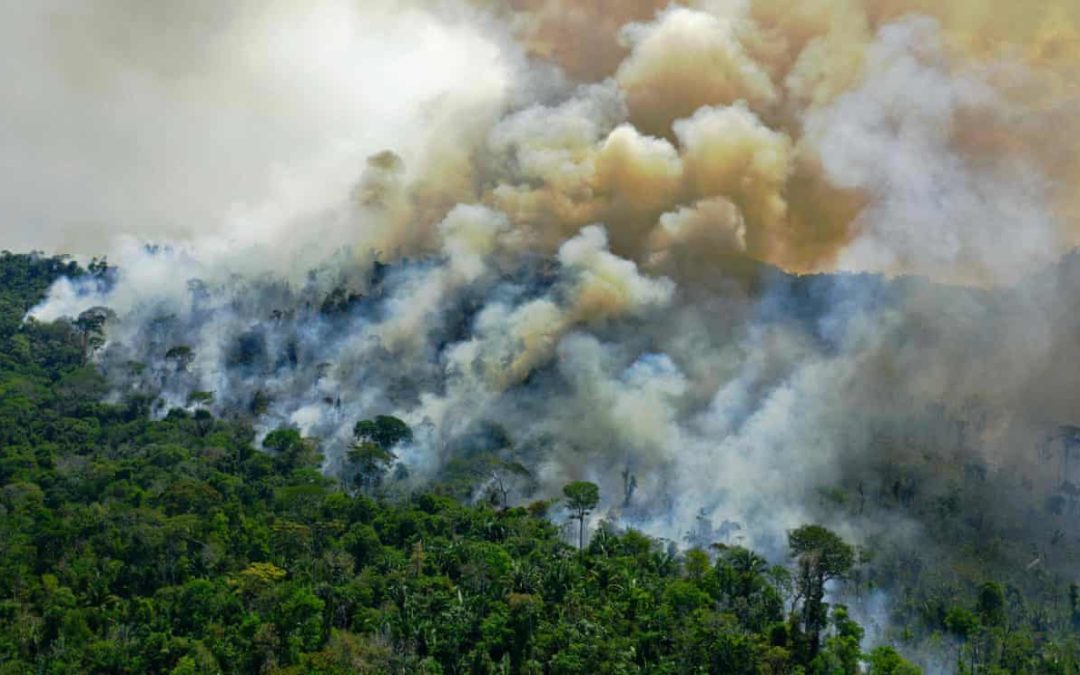SOURCE: The Guardian
DATE: July 14, 2021
SNIP: The Amazon rainforest is emitting a billion tonnes of carbon dioxide a year, according to a study. The giant forest had been absorbing the emissions driving the climate crisis but is now causing its acceleration, researchers said.
Most of the emissions are caused by fires, many deliberately set to clear land for beef and soy production. But even without fires, hotter temperatures and droughts mean the south-eastern Amazon has become a source of CO2, rather than a sink.
Growing trees and plants have taken up about a quarter of all fossil fuel emissions since 1960, with the Amazon playing a major role as the largest tropical forest. Losing the Amazon’s power to capture CO2 is a stark warning that slashing emissions from fossil fuels is more urgent than ever, scientists said.
The research used small planes to measure CO2 levels up to 4,500m above the forest over the last decade, showing how the whole Amazon is changing. Previous studies indicating the Amazon was becoming a source of CO2 were based on satellite data, which can be hampered by cloud cover, or ground measurements of trees, which can cover only a tiny part of the vast region.
The scientists said the discovery that part of the Amazon was emitting carbon even without fires was particularly worrying. They said it was most likely the result of each year’s deforestation and fires making adjacent forests more susceptible the next year. The trees produce much of the region’s rain, so fewer trees means more severe droughts and heatwaves and more tree deaths and fires.
The government of Brazil’s president, Jair Bolsonaro, has been harshly criticised for encouraging more deforestation, which has surged to a 12-year high, while fires hit their highest level in June since 2007.
Luciana Gatti, at the National Institute for Space Research in Brazil and who led the research, said: “The first very bad news is that forest burning produces around three times more CO2 than the forest absorbs. The second bad news is that the places where deforestation is 30% or more show carbon emissions 10 times higher than where deforestation is lower than 20%.”
Fewer trees meant less rain and higher temperatures, making the dry season even worse for the remaining forest, she said: “We have a very negative loop that makes the forest more susceptible to uncontrolled fires.”
Prof Scott Denning, at Colorado State University, said the aerial research campaign was heroic. “In the south-east, the forest is no longer growing faster than it’s dying. This is bad – having the most productive carbon absorber on the planet switch from a source to a sink means we have to eliminate fossil fuels faster than we thought.”

